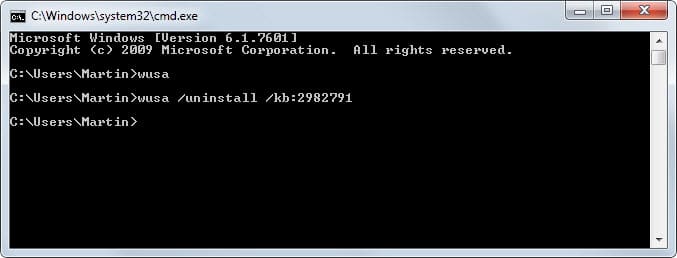
Then query the compressed GUID at the following registry location: Put the numbers all together and remove the spaces. The numbers are displayed as C8 EF 10 05 40 38 38 9C. The numbers are displayed as 8C FE 01 50 04 83 83 C9. Break up the two sections to every two characters that are separated by spaces.In the fourth and fifth sections, you have to transpose every two characters. In this example, the first three sections are displayed as 90401109 0006 3D11. Reverse the order of each number of the first three sections. For example, an uncompressed GUID without dashes is displayed as 90110409 6000 11D3 8CFE 0150048383C9. Separate the uncompressed GUID into five sections and drop the dashes. Here are the steps about how to convert the uncompressed GUID to the compressed GUID. You can do this as soon as you convert the update GUID to the compressed GUID. How can we determine whether the update is installed programmatically if we know the GUID of the update?

Use /qb for an automated uninstallation with a progress bar, or use /qn for a completely silent uninstallation. %windir%\System32\msiexec.exe /package /qn This article describes how to uninstall Office updates automatically by using a command line that resembles the following: This article was written by Eric Ashton, Senior Support Escalation Engineer. How to automate the uninstallation of an Office update programmatically


 0 kommentar(er)
0 kommentar(er)
